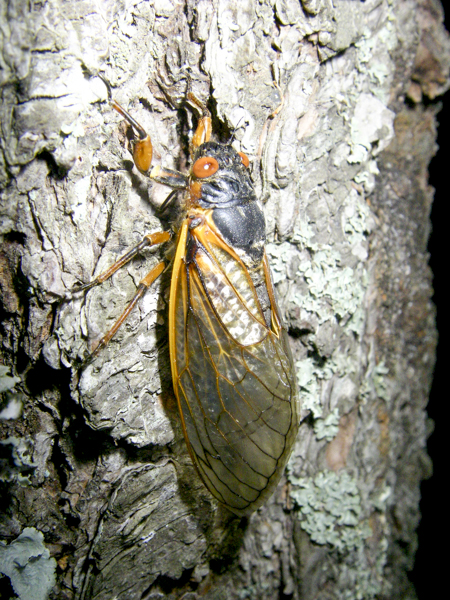 Cicadas are a type of insect that on any summer day in most places in North America, can be heard calling from the treetops. If you’re like many people, you may have heard of them, but know little more than that they make a lot of noise! Here are some interesting things about them:
Cicadas are a type of insect that on any summer day in most places in North America, can be heard calling from the treetops. If you’re like many people, you may have heard of them, but know little more than that they make a lot of noise! Here are some interesting things about them: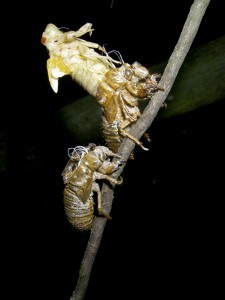
1 Cicadas hold two records in the insect world–they make the loudest sound and are the longest lived insects in North America. It’s the males who are responsible, calling with all they’ve got in hopes of attracting a mate. The calls of some cicadas can reach 120 decibels and can be heard up to one mile away!
2. They make their sounds by vibrating a hollow drum-like organ on their abdomens. And they are LOUD, as high as 106.7 decibels!
3. Cicadas are found on every continent with over 3000 species. However, North America is the only place that the Periodical or 17-Year Cicada resides. In NA there are 7 species of periodical cicadas.
4. Like most insects, cicadas begin their lives as eggs. Females insect the eggs into small saplings at the tops of trees. When the eggs hatch into larvae 6-10 weeks later, they fall to the forest floor and burrow under the ground 6-10 inches where they will remain for a number of years depending on species–from one to 13 or 17 years.
5. The baby insects, called nymphs, will feed on the sap from tree roots until it’s time to emerge as adults. This means staying underground for one or two years or 13 or 17 years!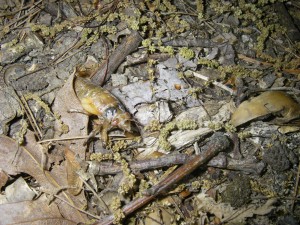
6. Periodical cicadas reach astonishing populations, sometimes with 1.5 million per acre!
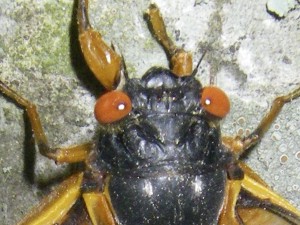 7. Cicadas have 5 eyes, 2 compound eyes and three ocelli. Ocelli are jewel like eyes between compound eyes that detect light and darkness.
7. Cicadas have 5 eyes, 2 compound eyes and three ocelli. Ocelli are jewel like eyes between compound eyes that detect light and darkness.
8. Despite widespread belief otherwise, periodical cicadas are actually beneficial to the ecology of a region. As larvae they aerate the soil and as adults their egg-laying acts as a natural pruning for trees that results in greater numbers of fruits the following year. In addition, their mass emergence turns over large amounts of soil and their decaying bodies return valuable nitrogen and nutrients to the soil.
9. Females lay 1 to several dozen rice sized eggs in each branch, with a total of 400-600 in 40 to 50 sites. Problems may arise if the trees are not large enough to overcome this natural pruning.
10. The nymphs emerge on a spring evening when the soil temperature reaches 63 degrees. This usually happens in late April or early May in the southern states and late May to early June in the northern states.
Click HERE to read about the night I witnessed a 17-year cicada emergence when I was thru-hiking the Appalachian Trail.


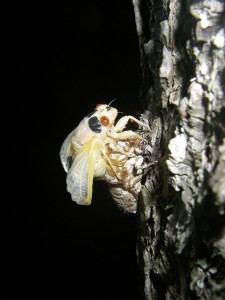
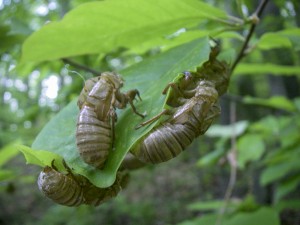
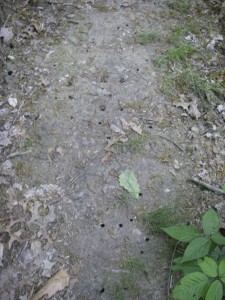
I love reading a post that will make people think.
Also, thank you for allowing me to comment!
Thank you for your comment! I will look forward to hearing from you again.